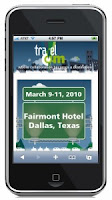The use of LBS (location based services) in the healthcare industry is growing rapidly. It is being used to save time, money, and reduce liabilities. Earlier this week an article was published by Pharmabiz.com that described how Tyco Security is providing Indian Hospitals with RFID services to track patients, medical equipment and pharmaceuticals (http://bit.ly/PAIJvP). Along with knowing patient locations, these solutions allow hospitals to track and maintain security over expensive equipment, and to closely monitor prescription drugs to limit dangerous mistakes.
A recent report by Research and Markets predicts the healthcare RFID market will grow at a CAGR of 35 percent through 2017. As this forecast demonstrates, RFID technology continues to gain traction in the healthcare industry proving that it has moved beyond its roots tracking cargo containers and freight (http://bit.ly/PAIJvP).
LBS technologies are also on the rise. Markets and Markets reports that the location based services market will grow at a CAGR of 25 percent annually through 2019 and the market will be valued at $39 billion. They also report that the largest portion of LBS growth will come from the healthcare asset management sector. LBS solutions help hospitals monitor patients locations and track ambulances as they respond to emergencies and deliver patients (http://bit.ly/1l7gV10).
It is our analysis, based on a review of publicly available data, that the healthcare industry will continue to adopt these technologies as they are proving to save money, reduce loss and limit liabilities. These solutions, along with GIS applications in healthcare, illustrate the huge potential the industry has in applying location and tracking technologies in everyday hospital operations.
************************************************************************
















